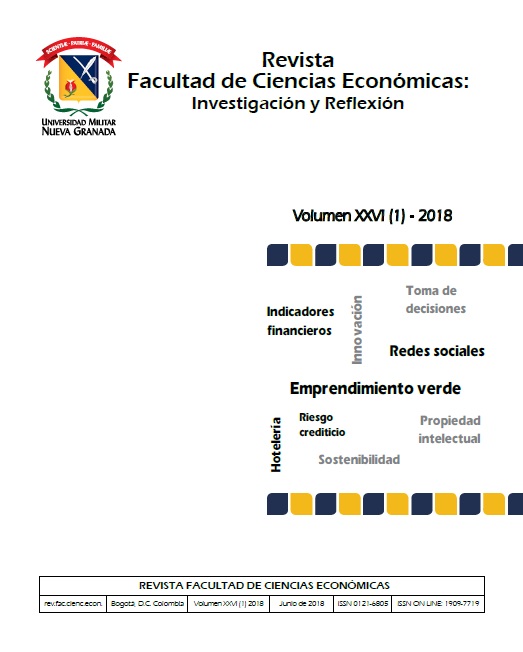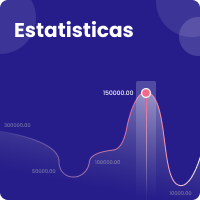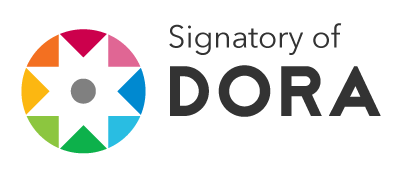Impacto das redes sociais nos rendimentos dos hotéis na Colômbia, no Equador e no Peru
Resumo
O objetivo da presente pesquisa é analisar a influência das avaliações dos hotéis nas redes sociais e como estas afetam seus rendimentos. A partir de dados mensais (entre agosto de 2014 e julho de 2015) de 48 hotéis da Colômbia, do Equador e do Peru, analisaram-se principalmente as variáveis: GRI (Global Review Index), oferta, demanda, venda, RevPAR (Revenue Per Avalable Room) e localização, mediante análise de conglomerados e um modelo linear. Encontrou-se que um melhor GRI favorece a uma melhor ratio entre as vendas e a oferta. Mais especificamente, observamos que quando o GRI se incrementa em uma unidade, o RevPAR cresce em 0,49%, mantendo o resto de variáveis constantes. É a primeira pesquisa realizada na América do Sul para analisar a incidência das redes sociais nos rendimentos dos hotéis.Downloads
Referências
Akehurst, G. (2009). User generated content: The use of blogs for tourism organisations and tourism consumers. Service Business, 3(1), 51-61. https://doi.org/10.1007/s11628-008-0054-2
Al-Debei, M. M., & Al-Lozi, E. (2014). Explaining and predicting the adoption intention of mobile data services: A value-based approach. Computers in Human Behavior, 35: 326-338. https://doi.org/10.1016/j.chb.2014.03.011
Anderson, C. (2012). The impact of social media on lodging performance. Cornell Hospitality Report, 12(15), 6-11.
Arnau, J., & Bono, R. (2008). Estudios longitudinales de medidas repetidas: Modelos de dise-o y análisis. Escritos De Psicología (Internet), 2(1), 32-41.
Arnau-Gras, J. (2007). Estudios longitudinales de medidas repetidas. modelos de dise-o y de análisis. Avances En Medicin, 5, 9-26.
Ayeh, J. K., Au, N., & Law, R. (2013). "Do we believe in TripAdvisor?" examining credibility perceptions and online travelers' attitude toward using user-generated content. Journal of Travel Research,. https://doi.org/10.1177/0047287512475217
Baloglu, S., Erdem, M., Brewer, P., Mayer, K., Christodoulidou, N., Connolly, D. J., & Brewer, P. (2010). An examination of the transactional relationship between online travel agencies, travel meta sites, and suppliers. International Journal of Contemporary Hospitality Management, 22(7), 1048-1062. https://doi.org/10.1108/09596111011066671
Bates, D., Mächler, M., Bolker, B., & Walker, S. (2014). Fitting linear mixed-effects models using lme4. arXiv Preprint arXiv:1406.5823,
Beldona, S., & Kwansa, F. (2008). The impact of cultural orientation on perceived fairness over demand-based pricing. International Journal of Hospitality Management, 27(4), 594-603. https://doi.org/10.1016/j.ijhm.2007.07.024
Berezina, K., Cobanoglu, C., Miller, B. L., & Kwansa, F. A. (2012). The impact of information security breach on hotel guest perception of service quality, satisfaction, revisit intentions and word-of-mouth. International Journal of Contemporary Hospitality Management, 24(7), 991-1010. https://doi.org/10.1108/09596111211258883
Chen, Y., & Xie, J. (2008). Online consumer review: Word-of-mouth as a new element of marketing communication mix. Management Science, 54(3), 477-491. https://doi.org/10.1287/mnsc.1070.0810
Cheung, C. M., Lee, M. K., & Rabjohn, N. (2008). The impact of electronic word-of-mouth: The adoption of online opinions in online customer communities. Internet Research, 18(3), 229-247. https://doi.org/10.1108/10662240810883290
Chevalier, J. A., & Mayzlin, D. (2006). The effect of word of mouth on sales: Online book reviews. Journal of Marketing Research, 43(3): 345-354. https://doi.org/10.1509/jmkr.43.3.345
Chun, R. (2005). Corporate reputation: Meaning and measurement. Basingstoke: Palgrave Macmillan.
Clemons, E. K., Gao, G. G., & Hitt, L. M. (2006). When online reviews meet hyperdifferentiation: A study of the craft beer industry. Journal of Management Information Systems, 23(2), 149-171. https://doi.org/10.2753/MIS0742-1222230207
Cohen, J. F., & Olsen, K. (2013). The impacts of complementary information technology resources on the service-profit chain and competitive performance of south african hospitality firms. International Journal of Hospitality Management, 34: 245-254. https://doi.org/10.1016/j.ijhm.2013.04.005
Cortizo, J. C., Carrero, F. M., & Gómez, J. M. (2011). Introduction to the special issue: Mining social media. International Journal of Electronic Commerce, 15(3): 5-8. https://doi.org/10.2753/JEC1086-4415150301
Craig, D. (2013). 8 estrategias clave para mejorar tu puntuación en TripAdvisor | TecnoHotel. Recuperado de http://www.tecnohotelnews.com/2013/09/8-estrategias-clave-para-mejorar-tu-puntuacion-en-tripadvisor/
Davis, A., & Khazanchi, D. (2008). An empirical study of online word of mouth as a predictor for multi‐product category e‐commerce sales. Electronic Markets, 18(2), 130-141. https://doi.org/10.1080/10196780802044776
Del Fresno, M. (2012). El consumidor social. reputación online y social media Editorial UOC.
Denizci Guillet, B., & Law, R. (2010). Analyzing hotel star ratings on third-party distribution websites. International Journal of Contemporary Hospitality Management, 22(6), 797-813. https://doi.org/10.1108/09596111011063098
Diana-Jens, P., & Rodríguez, A. (2015). La reputación online y su impacto en la política de precios de los hoteles. Cuadernos De Turismo, (36), 129-155. https://doi.org/10.6018/turismo.36.230911
Dickinger, A. (2010). The trustworthiness of online channels for experience-and goal-directed search tasks. Journal of Travel Research,
Fisher, H. (2016a). Is your hotel ready for millennials – and other device-savvy travelers? Sabre Hospitality Solutions Blog, Recuperado de http://sabrehospitality.com/resources/hotel-marketing-blogs/millennials-and-other-device-savvy-travelers
Fisher, H. (2016b). Millennials de-mystified: Who they are, how they shop, why they book. (). Retrieved from http://www2.sabrehospitality.com/millennials
Gretzel, U., & Yoo, K. H. (2008). Use and impact of online travel reviews. Information and Communication Technologies in Tourism 2008: 35-46. https://doi.org/10.1007/978-3-211-77280-5_4
Grønflaten, Ø. (2009). Predicting travelers' choice of information sources and information channels. Journal of Travel Research, 48(2):230-244 https://doi.org/10.1177/0047287509332333
Guacaran, A. (2016). 7 maneras de mejorar tu rendimiento en TripAdvisor. Recuperado de https://www.revinate.com/blog/2016/03/7-maneras-de-mejorar-tu-rendimiento-en-tripadvisor/
Hernández, E., Fuentes, L., & Morini, S. (2012). Una aproximación a la reputación en línea de los establecimientos hoteleros espa-oles. Papers De Turisme, (52), 63-88.
Hoffman, D. L., & Novak, T. P. (2012). Toward a deeper understanding of social media. Journal of Interactive Marketing, 26(2), 69-70. Recuperado de http://www.econis.eu/PPNSET?PPN=719146283, https://doi.org/10.1016/j.intmar.2012.03.001
Hong, S., Thong, J. Y., Moon, J., & Tam, K. (2008). Understanding the behavior of mobile data services consumers. Information Systems Frontiers, 10(4), 431-445. https://doi.org/10.1007/s10796-008-9096-1
Hsieh, Y. (2012). Hotel companies' environmental policies and practices: A content analysis of their web pages. International Journal of Contemporary Hospitality Management, 24(1), 97-121. https://doi.org/10.1108/095961112
Instagram. (2016). Instagram. Recuperado de https://www.instagram.com/about/us/
Jauhari, V., Dabas, S., & Manaktola, K. (2007). Managing reservations through online distribution channels: An insight into mid-segment hotels in india. International Journal of Contemporary Hospitality Management, 19(5), 388-396. https://doi.org/10.1108/09596110710757552
Jun, S. H., Vogt, C. A., & MacKay, K. J. (2010). Online information search strategies: A focus on flights and accommodations. Journal of Travel & Tourism Marketing, 27(6), 579-595. https://doi.org/10.1080/10548408.2010.507151
Kaplan, A. M., & Haenlein, M. (2010). Users of the world, unite! the challenges and opportunities of social media. Business Horizons, 53(1), 59-68. https://doi.org/10.1016/j.bushor.2009.09.003
Lee, J., Park, D., & Han, I. (2008). The effect of negative online consumer reviews on product attitude: An information processing view. Electronic Commerce Research and Applications, 7(3), 341-352. https://doi.org/10.1016/j.elerap.2007.05.004
Leyland, A. H., & McLeod, A. (2000). Mortality in england and wales, 1979-1992: An introduction to multilevel modelling using MLwiN. Glasgow: MRC Social and Public Health Sciences Unit, Lipsman, A., Mudd, G., Rich, M., & Bruich, S. (2012). The power of "Like". Journal of Advertising Research, 52(1): 40-52.
Li, X. R., Pan, B., Zhang, L. G., & Smith, W. W. (2009). The effect of online information search on image development: Insights from a mixed-methods study. Journal of Travel Research, 48(1):45-57 https://doi.org/10.1177/0047287508328659
Liang, T. & Turban, E. (2011). Introduction to the special issue social commerce: A research framework for social commerce. International Journal of Electronic Commerce, 16(2): 5-14. doi:10.2753/JEC1086-4415160201
Litvin, S. W., Goldsmith, R. E., & Pan, B. (2008). Electronic word-of-mouth in hospitality and tourism management. Tourism Management, 29(3), 458-468. https://doi.org/10.1016/j.tourman.2007.05.011
Madi, A., Brashear Alejandro, T., & Brashear Alejandro, T. (2016). Using values to segment virtual consumers on social networking sites. Marketing Intelligence & Planning, 34(5) https://doi.org/10.1108/MIP-11-2015-0223
Martínez, M., Bernal García, J. J., & Mellinas, J. P. (2012). Los hoteles de la región de murcia ante las redes sociales y la reputación online. Revista De Análisis Turístico, (13), 1-10.
Martínez, O., & Arango, P. (2012). El mobile marketing en colombia. su estado actual y proyección a-o 2012. Revista EAN, (73): 136-167.
Morales, P. M., Agüera, F. O., & Cuadra, S. M. (2015). Análisis de las variables que influyen en la reputación online de las empresas turísticas. el caso de los hoteles de córdoba y granada. Gran Tour, Revista De Investigaciones Turísticas, (11): 103-120
Murphy, H. C., & Chen, M. (2014). Online information sources used in hotel bookings examining relevance and recall. Journal of Travel Research, , 1-14. doi:0047287514559033
MyHotel. (2016). Conoce a myHotel - Nosotros. Recuperado de https://myhotel.com.es/nosotros/
O'Connor, P., & Murphy, J. (2008). Hotel yield management practices across multiple electronic distribution channels. Information Technology & Tourism, 10(2), 161-172. https://doi.org/10.3727/109830508784913103
Olery. (2016). Olery - Travel & Hotel Data Specialist. Recuperado de http://www.olery.com/
Park, D., & Kim, S. (2009). The effects of consumer knowledge on message processing of electronic word-of-mouth via online consumer reviews. Electronic Commerce Research and Applications, 7(4): 399-410. https://doi.org/10.1016/j.elerap.2007.12.001
Persaud, A., & Azhar, I. (2012). Innovative mobile marketing via smartphones: Are consumers ready?. Marketing Intelligence & Planning, 30(4): 418-443. https://doi.org/10.1108/02634501211231883
Pinheiro, P. & Bates, D. (2016). R: Linear Mixed-Effects Models. Recuperado de https://stat.ethz.ch/R-manual/R-devel/library/nlme/html/lme.html
Ramendra Singh, D., Yavuz, R., & Toker, A. (2014). Location sharing on social networks: Implications for marketing. Marketing Intelligence & Planning, 32(5): 567-585. https://doi.org/10.1108/MIP-05-2013-0084
Raudenbush, S. W. (2001). Comparing personal trajectories and drawing causal inferences from longitudinal data. Annual Review of Psychology, 52(1), 501-525. https://doi.org/10.1146/annurev.psych.52.1.501
Resnick, P., Zeckhauser, R., Swanson, J., & Lockwood, K. (2006). The value of reputation on eBay: A controlled experiment. Experimental Economics, 9(2), 79-101. https://doi.org/10.1007/s10683-006-4309-2
ReviewPro. (2015). Guía | Las 8 Claves para Mejorar tu Ranking en TripAdvisor. Recuperado de https://www.reviewpro.com/es/guia-estrategias-para-mejorar-ranking-tripadvisor-thanks/
ReviewPro. (2016a). Building a Winning OTA Strategy for Your Hotel. Recuperado de https://www.reviewpro.com/optimize-hotel-performance-on-otas-thanks/
ReviewPro. (2016b). ReviewPro. Gestión de Reputación para Hoteles. Recuperado de https://www.reviewpro.com/es/productos/gestion-de-reputacion-para-hoteles/
Revinate. (2016). Revinate Hospitality Management Software. Recuperado de https://www.revinate.com/company/about/
Rodríguez, A. A. (2007). Perspectiva de la construcción hotelera en el mediterrneo europeo. Anuario Jurídico Y Económico Escurialense, (40), 351-376.
Ruffell, C. (2013). Crucial Ideas for Effective Hotel Marketing, ReKnown. Recuperado de http://www.reelmarketer.com/crucial-ideas-effective-hotel-marketing-reknown/
Ruzic, D., Andrilic, B., & Ruzic, I. (2011). Web 2.0 promotion techniques in hospitality industry. International Journal of Management Cases, 13(4): 310-319. https://doi.org/10.5848/APBJ.2011.00141
Sainaghi, R. (2011). RevPAR determinants of individual hotels: Evidences from milan. International Journal of Contemporary Hospitality Management, 23(3), 297-311. https://doi.org/10.1108/09596111111122497
Sainz, R. C., & González, G. M. (2004). Aplicación de los modelos mixtos a un caso práctico de modelización del crecimiento y producción de las masas forestales. Cuadernos De La Sociedad Espa-ola De Ciencias Forestales, (18), 317-321.
San Martín, S., López-Catalán, B., & Ramon-Jeronimo, M. A. (2012). Factors determining firms' perceived performance of mobile commerce. Industrial Management & Data Systems, 112(6), 946-963. https://doi.org/10.1108/02635571211238536
Senecal, S., & Nantel, J. (2004). The influence of online product recommendations on consumers' online choices. Journal of Retailing, 80(2), 159-169. https://doi.org/10.1016/j.jretai.2004.04.001
Seo, D., Ranganathan, C., & Babad, Y. (2008). Two-level model of customer retention in the US mobile telecommunications service market. Telecommunications Policy, 32(3): 182-196. https://doi.org/10.1016/j.telpol.2007.09.004
Seoane, J. (2014). ¿Modelos mixtos (lineales)? una introducción para el usuario temeroso. ETOLOGUÍA, 24: 15-37
Sigala, M. (2009). E-service quality and web 2.0: Expanding quality models to include customer participation and inter-customer support. The Service Industries Journal, 29(10), 1341-1358. https://doi.org/10.1080/02642060903026239
Sparks, B. A., Perkins, H. E., & Buckley, R. (2013). Online travel reviews as persuasive communication: The effects of content type, source, and certification logos on consumer behavior. Tourism Management, 39, 1-9. https://doi.org/10.1016/j.tourman.2013.03.007
SW Chan, E. (2013). Gap analysis of green hotel marketing. International Journal of Contemporary Hospitality Management, 25(7), 1017-1048. https://doi.org/10.1108/IJCHM-09-2012-0156
Thakran, K., & Verma, R. (2013). The emergence of hybrid online distribution channels in travel, tourism and hospitality. Cornell Hospitality Quarterly, 54(3), 240-247. https://doi.org/10.1177/1938965513492107
Torres, E., & Kline, S. (2013). From customer satisfaction to customer delight: Creating a new standard of service for the hotel industry. International Journal of Contemporary Hospitality Management, 25(5), 642-659. https://doi.org/10.1108/IJCHM-Dec-2011-0228
TripAdvisor. (2016). Acerca de TripAdvisor. Recuperado de https://www.tripadvisor.es/PressCenter-c6-About_Us.html
TrustYou. (2016). TrustYou. Información general ·. Recuperado de http://www.trustyou.com/informacin-general?lang=es
Twitter. (2016). Red Social Twitter. Recuperado de https://about.twitter.com/es/company
Vermeulen, I. E., & Seegers, D. (2009). Tried and tested: The impact of online hotel reviews on consumer consideration. Tourism Management, 30(1), 123-127. https://doi.org/10.1016/j.tourman.2008.04.008
Willemsen, L. M., Neijens, P. C., Bronner, F., & de Ridder, J. A. (2011). "Highly recommended!" the content characteristics and perceived usefulness of online consumer reviews. Journal of Computer‐Mediated Communication, 17(1): 19-38. https://doi.org/10.1111/j.1083-6101.2011.01551.x
Williams, D. L., Crittenden, V. L., Keo, T., & McCarty, P. (2012). The use of social media: An exploratory study of usage among digital natives. Journal of Public Affairs, 12(2): 127-136. doi:10.1002/pa.1414 https://doi.org/10.1002/pa.1414
Xiang, Z., & Gretzel, U. (2010). Role of social media in online travel information search. Tourism Management, 31(2): 179-188. https://doi.org/10.1016/j.tourman.2009.02.016
Ye, Q., Law, R., Gu, B., & Chen, W. (2011). The influence of user-generated content on traveler behavior: An empirical investigation on the effects of e-word-of-mouth to hotel online bookings. Computers in Human Behavior, 27(2), 634-639. https://doi.org/10.1016/j.chb.2010.04.014
YouTube. (2016). YouTube. Recuperado de https://www.youtube.com/yt/press/es/statistics.html
Zhang, Z., Ye, Q., & Law, R. (2011). Determinants of hotel room price: An exploration of travelers' hierarchy of accommodation needs. International Journal of Contemporary Hospitality Management, 23(7), 972-981. https://doi.org/10.1108/09596111111167551
Zhu, F., & Zhang, X. (2010). Impact of online consumer reviews on sales: The moderating role of product and consumer characteristics. Journal of Marketing, 74(2), 133-148. https://doi.org/10.1509/jmkg.74.2.133











